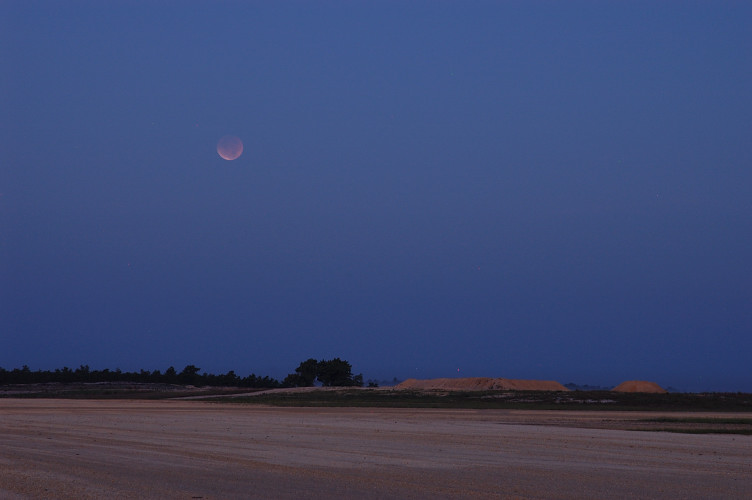by Joe Stieber » Fri Dec 09, 2011 3:34 pm
alter-ego wrote:Chris - You may have the opportunity to view a selenelion. For Denver, the totally eclipsed moon will set ~3 minutes after sunrise. For me the moonset is ~6 minutes after sunrise, but won't be total - it will be emerging from the umbra.
That's a new term for me too, but it turns out I experienced a Selenelion situation back on the morning of August 28, 2007. Totality of the lunar eclipse started at 5:52 am EDT, the sun rose at 6:22 am and the moon set at 6:24 am (from my location in the New Jersey Pine Barrens). Here's a picture I took at 5:53 am, 1 minute after the start of totality, when the moon was about 5 degrees altitude. The darkened moon is beginning to fade into the twilight.

In another picture taken at 6:00 am, the totally eclipsed moon is barely visible in the rapidly brightening twilight, and I was last able to spot the moon at 6:02 am using 10x42 binoculars. So once the sun rose, the dark, about-to-set eclipsed moon wouldn't have been visible anyway (even though the horizon in that direction is less than half a degree high).
[quote="alter-ego"]Chris - You may have the opportunity to view a selenelion. For Denver, the totally eclipsed moon will set ~3 minutes after sunrise. For me the moonset is ~6 minutes after sunrise, but won't be total - it will be emerging from the umbra.[/quote]
That's a new term for me too, but it turns out I experienced a Selenelion situation back on the morning of August 28, 2007. Totality of the lunar eclipse started at 5:52 am EDT, the sun rose at 6:22 am and the moon set at 6:24 am (from my location in the New Jersey Pine Barrens). Here's a picture I took at 5:53 am, 1 minute after the start of totality, when the moon was about 5 degrees altitude. The darkened moon is beginning to fade into the twilight.
[img]http://www.wasociety.us/JAS/DSC_6228_sm.jpg[/img]
In another picture taken at 6:00 am, the totally eclipsed moon is barely visible in the rapidly brightening twilight, and I was last able to spot the moon at 6:02 am using 10x42 binoculars. So once the sun rose, the dark, about-to-set eclipsed moon wouldn't have been visible anyway (even though the horizon in that direction is less than half a degree high).